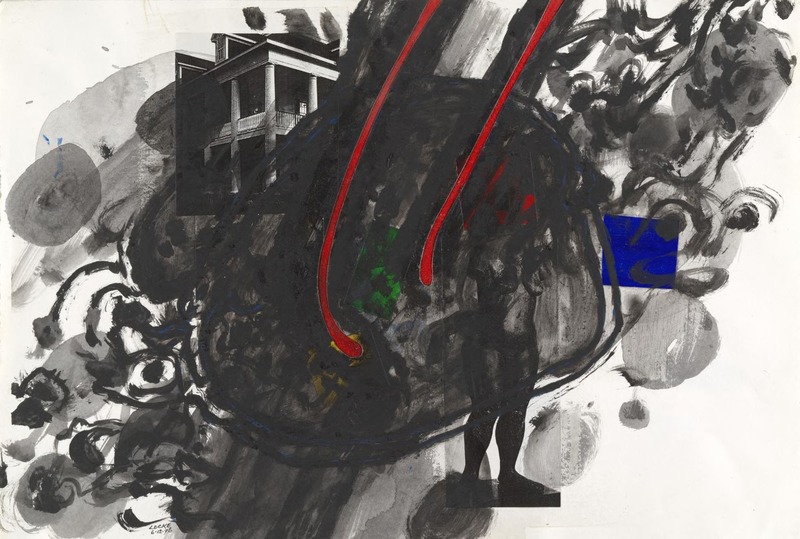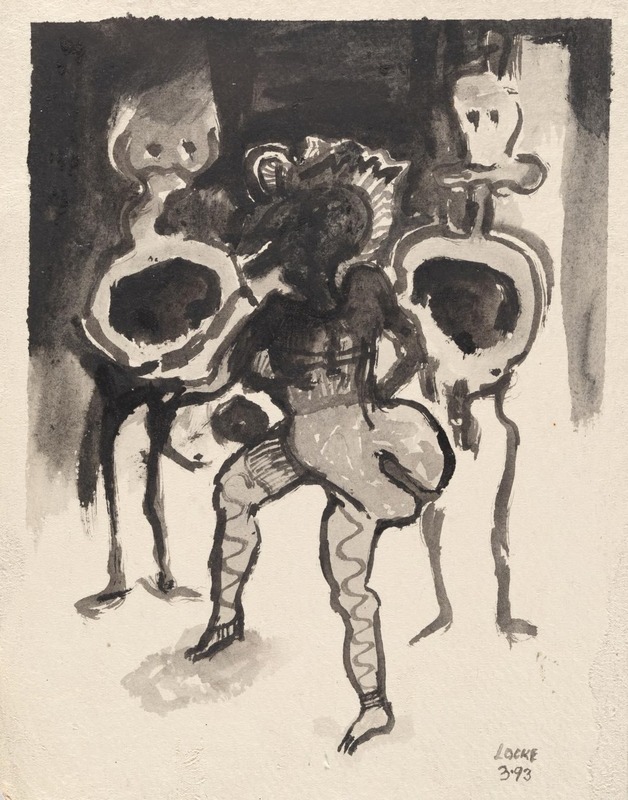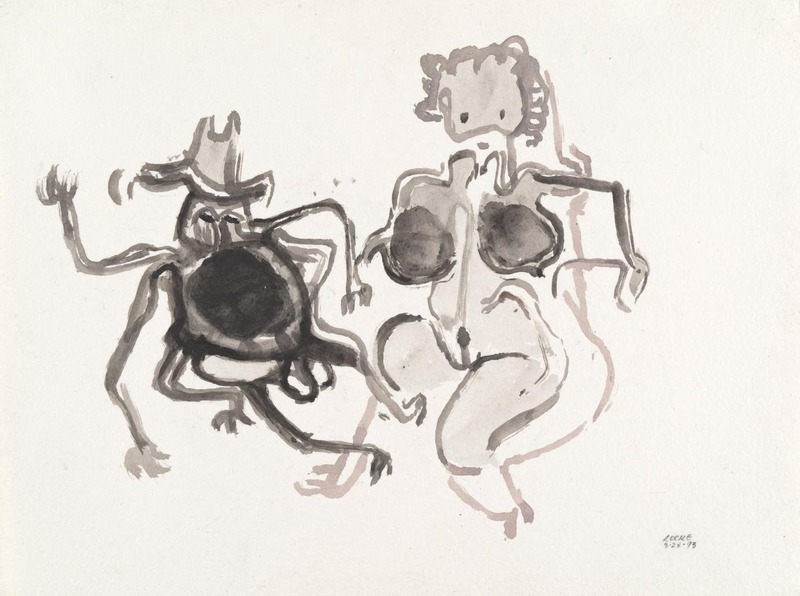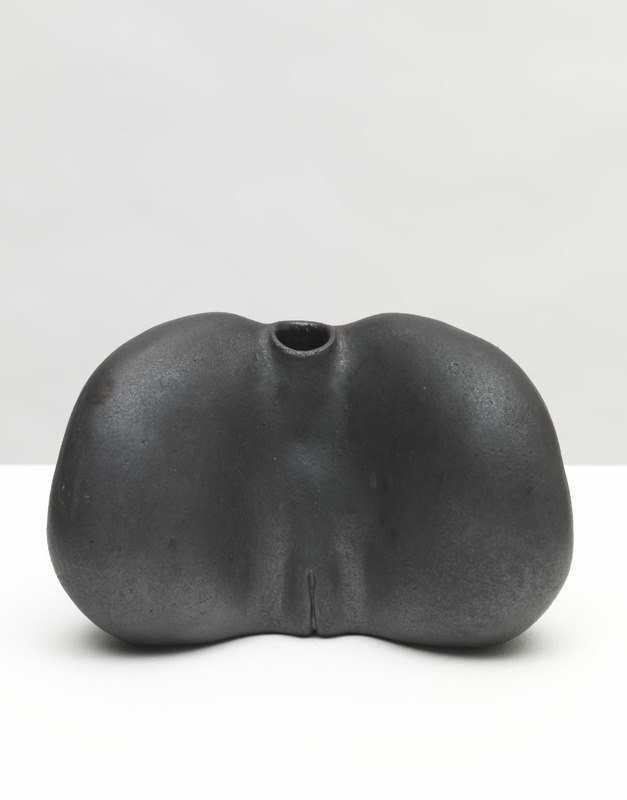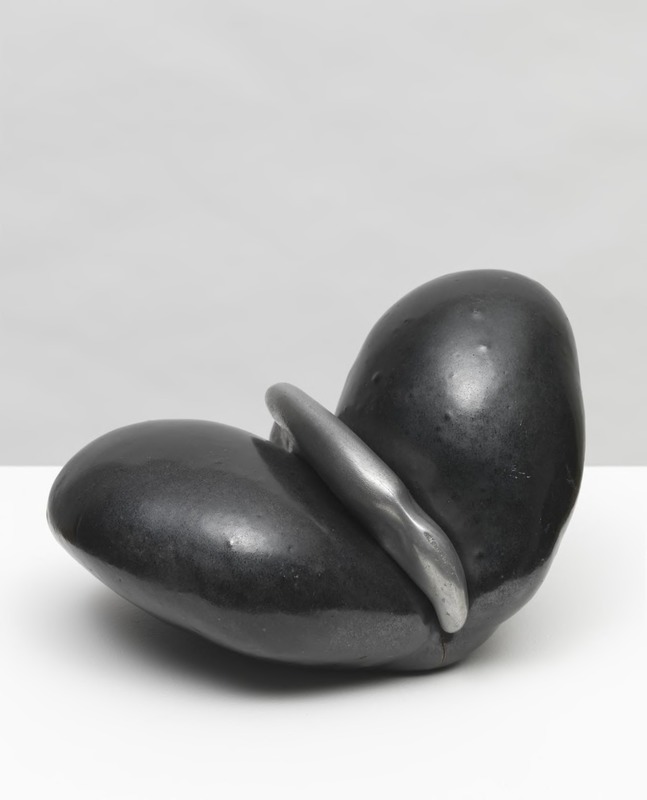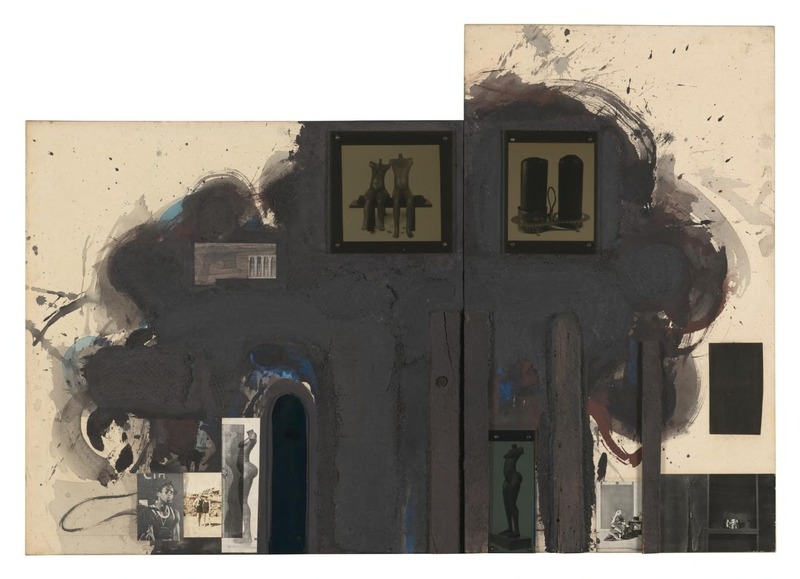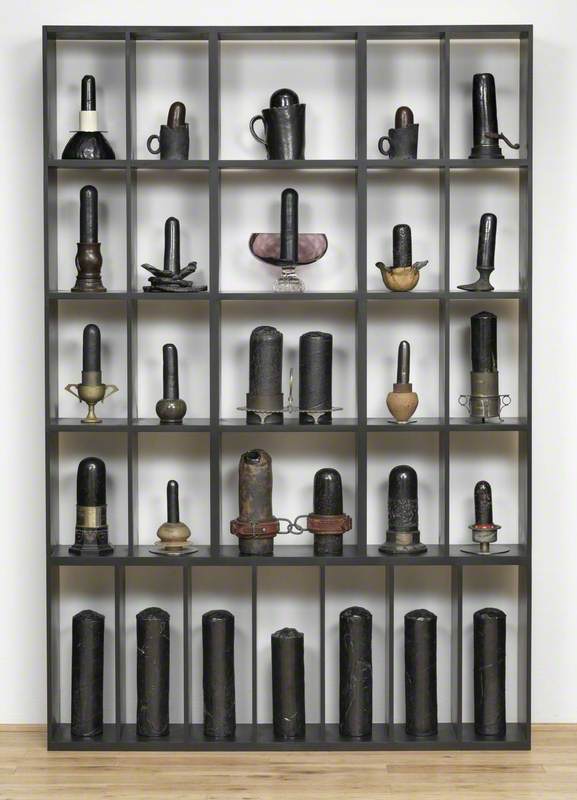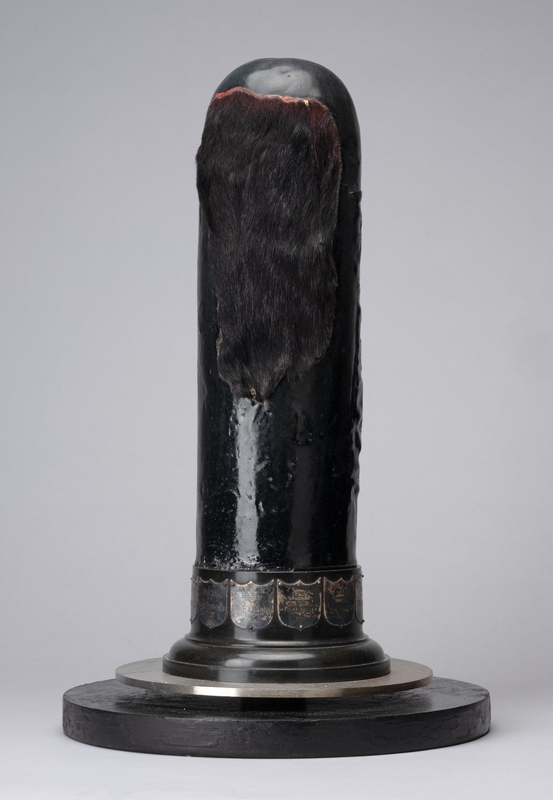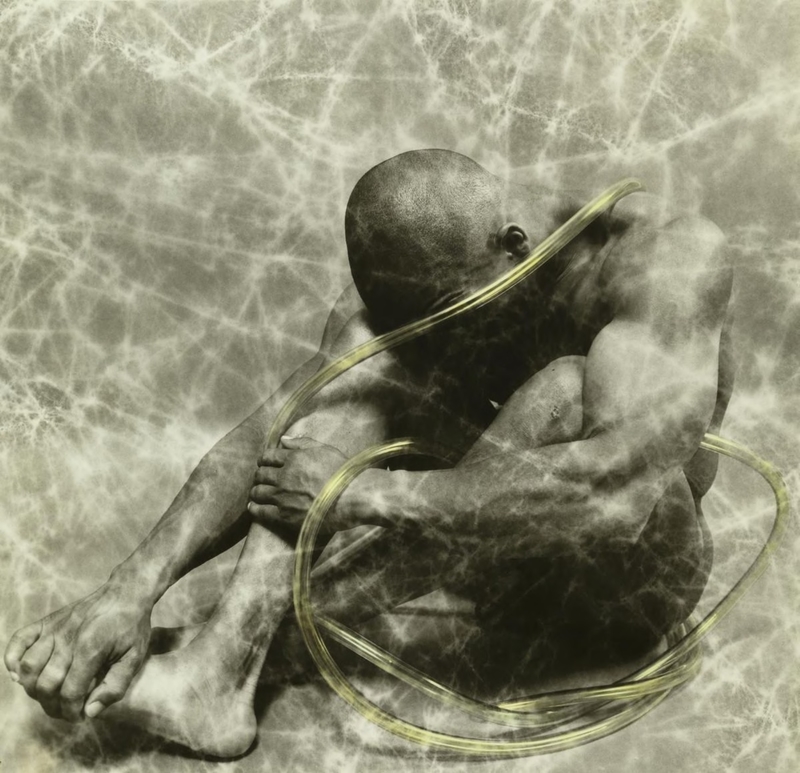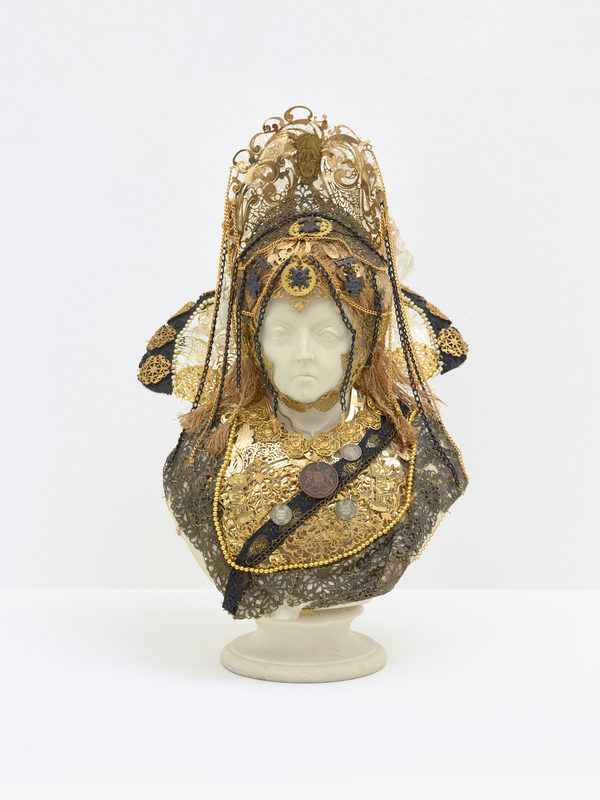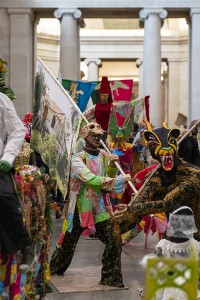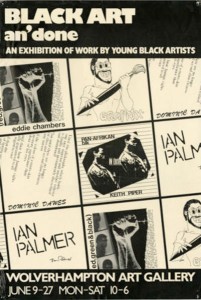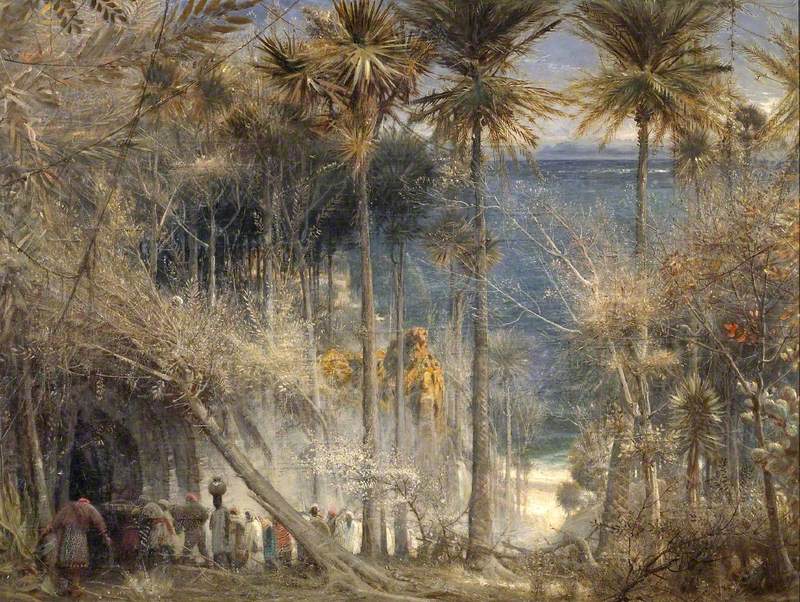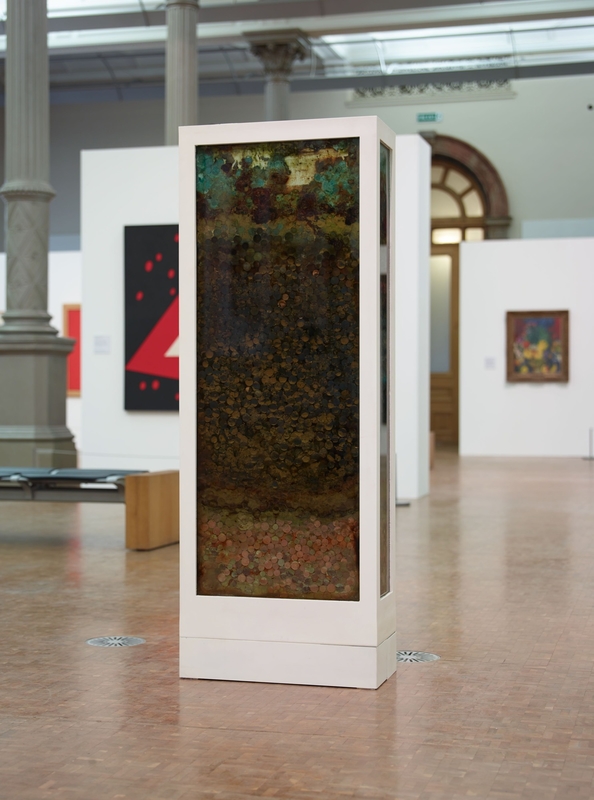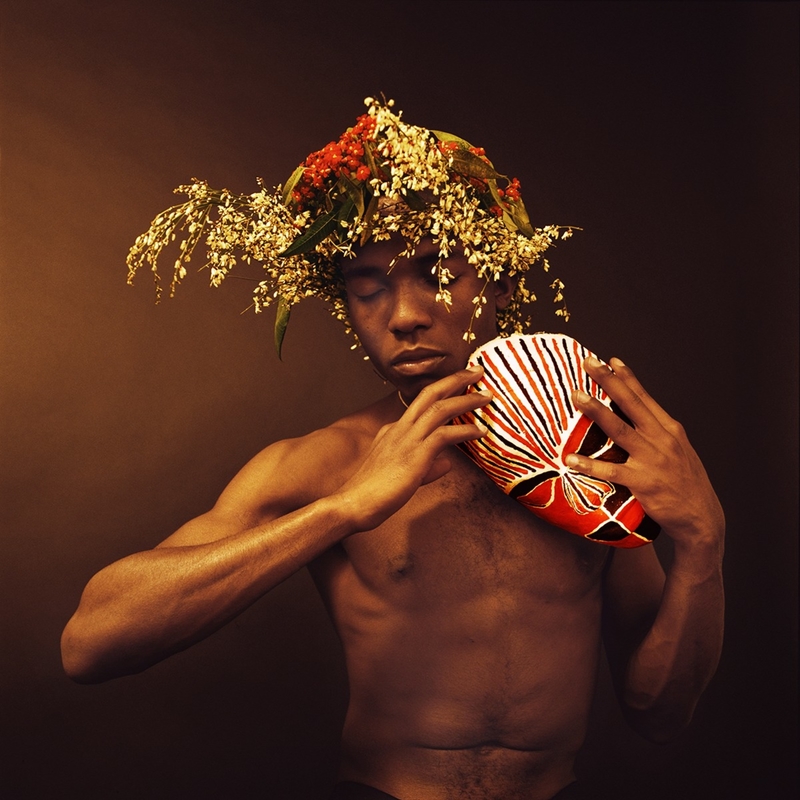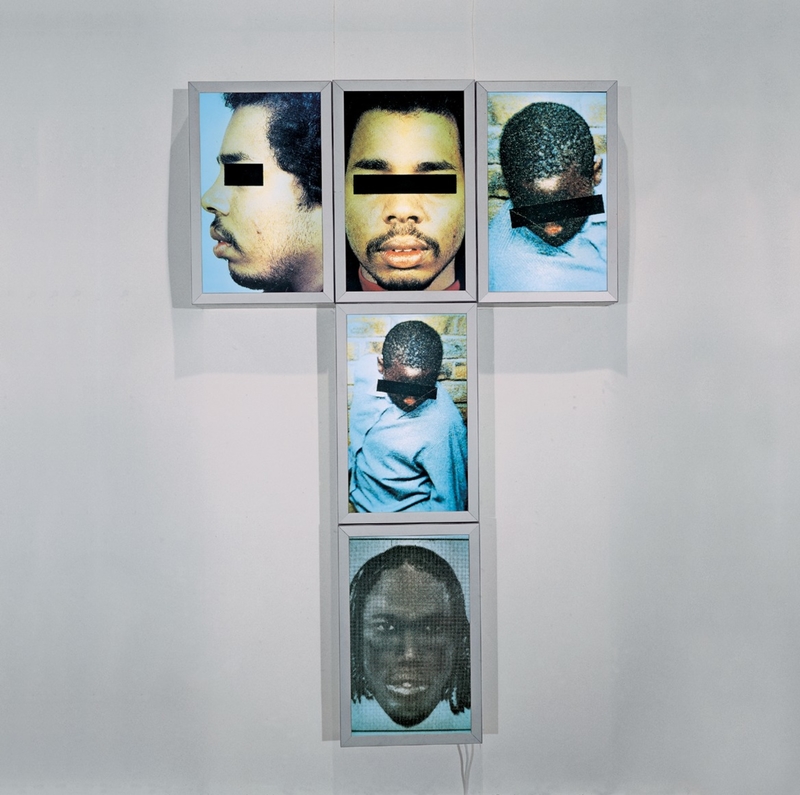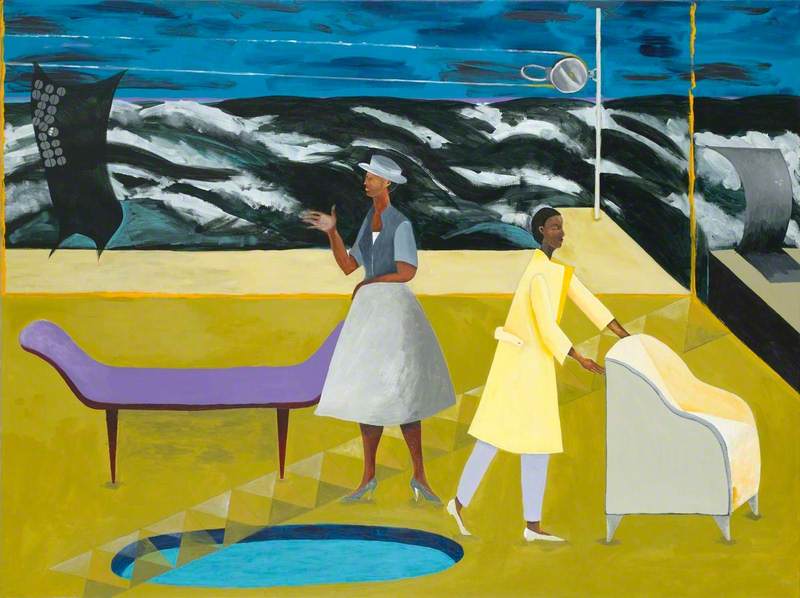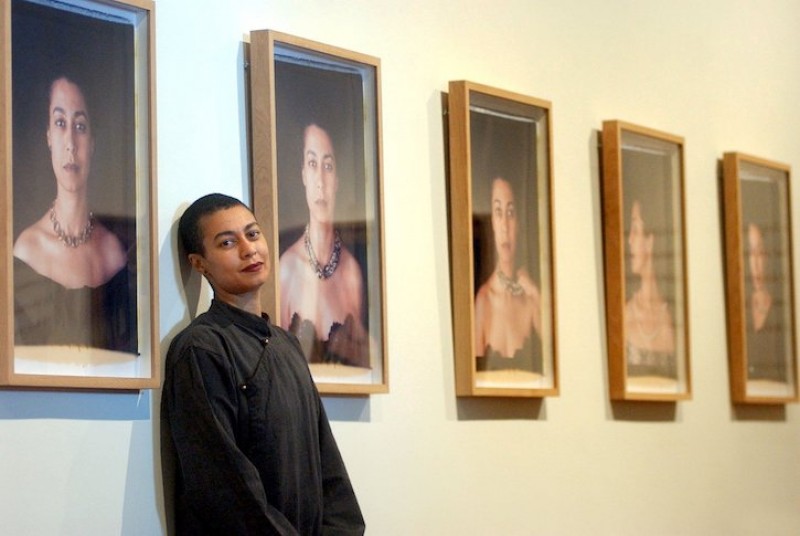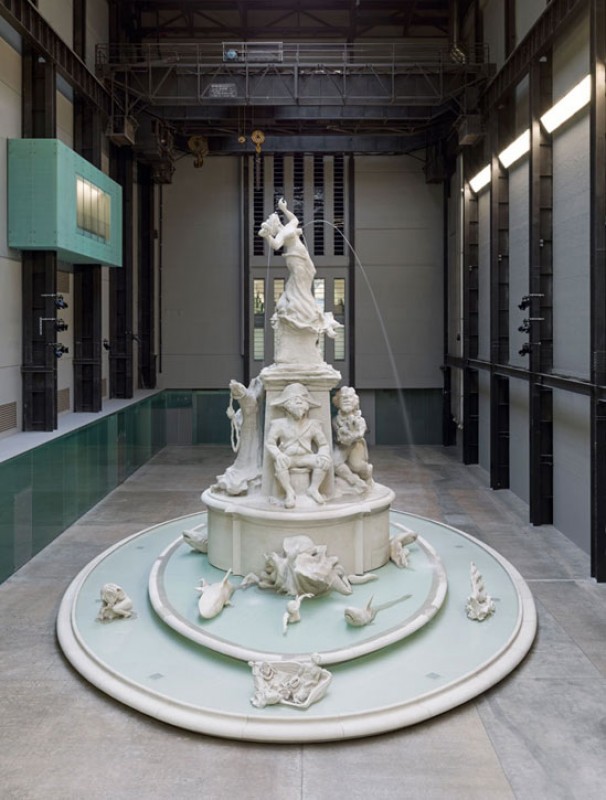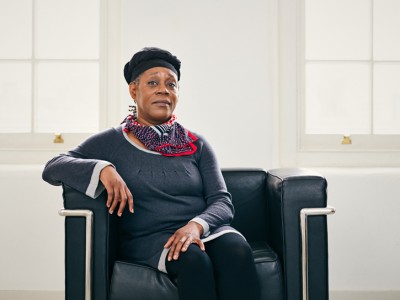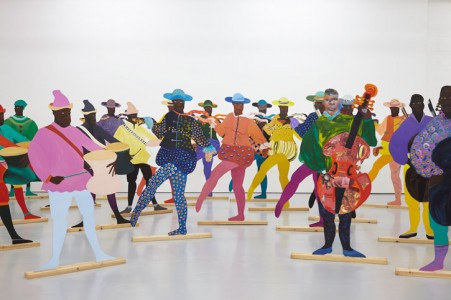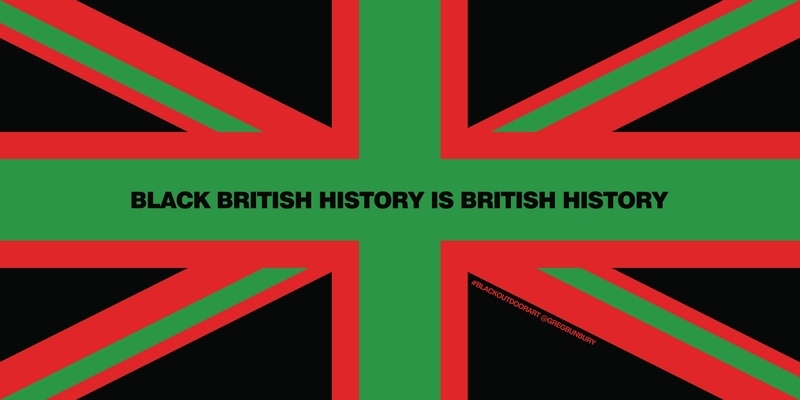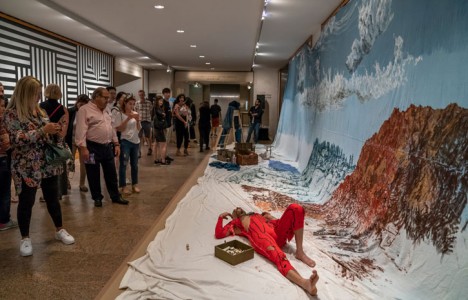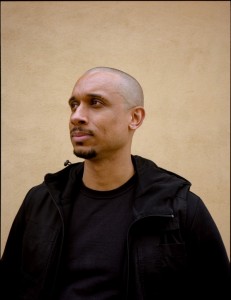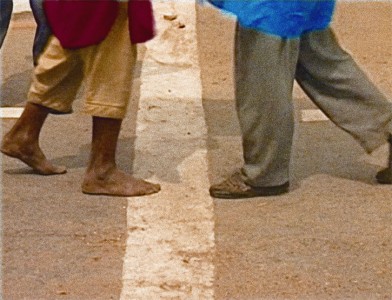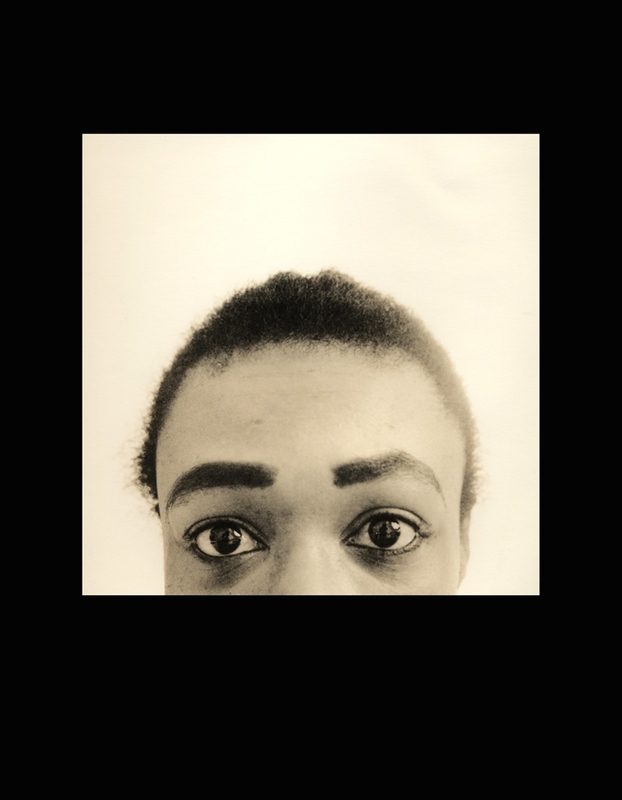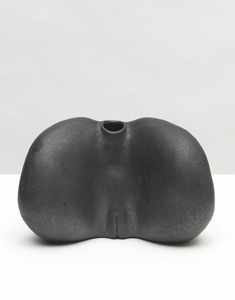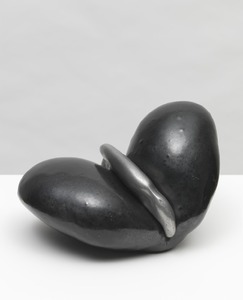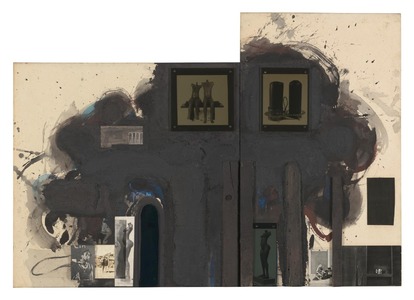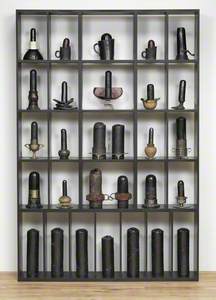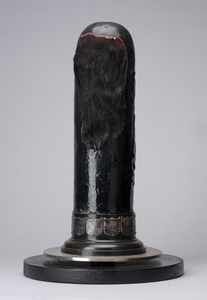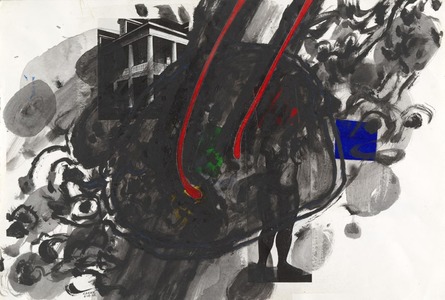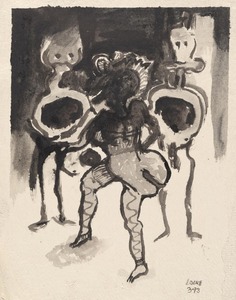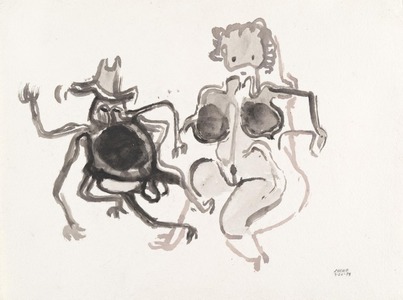Donald Locke's artistic practice began in studio ceramics, evolving through the 1970s via installation and performance into a visual arts career that took the Guyana-born artist from Edinburgh and London to Arizona and Atlanta.
Born in Guyana in 1930, Locke attended the Working Peoples' Free Art Class offered by local artist E. R. Burrowes – an initiative forged in the lead up to Guyanese independence in the 1960s. Locke came to the UK to study further, initially in Corsham, Bath.
His ceramic and acrylic works are held in UK collections including Tate, The Fitzwiliam Museum and the Victoria and Albert Museum, whilst the artists' practice is represented more broadly in many internationally renowned institutions – including the National Museum of African American History and Culture, The Studio Museum Harlem in New York, the High Museum of Art in Atlanta and Georgia Museum of Art in Athens.
In October 1959, Locke arrived in Edinburgh with a scholarship from the Guyanese Ministry of Education to study for a five-year postgraduate degree in Fine Art – a split programme between the University of Edinburgh and Edinburgh College of Art. His work was clearly influenced by being between these two institutions: as well as fine art and aesthetics, Locke also studied moral philosophy and social anthropology.
Graduating in 1964, he also received the Cousins Prize and the Lowenstein Fellowship, while his graduate thesis analysed versions of the portrait of Sebastian Vrancx from the 'Centum Icones' series of engravings by Anthony van Dyck. His tutors at Edinburgh College of Art included Dave Cohen and Katie Horsman, with whom he had an enduring dialogue.
View this post on Instagram
Locke's activities beyond his studies and experimental studio work were equally exciting. In 1962, he curated an exhibition, the West Indian Federation Commemorative, at the Paperback Bookshop and Gallery in Edinburgh. The Paperback was founded by Jim Haynes, operating from 1959 until 1966. Haynes had come to Edinburgh from America through military service, stayed on and became a founding member of the Traverse Theatre, also in Edinburgh. The bookshop was less an initiative predicated on selling books, but more a social gathering space, the basement being set aside for exhibitions organised by Richard Demarco.
Locke's organisation of the exhibition suggests not only a willingness by local networks to collaborate, but also a desire to showcase the work of a peer group beyond Edinburgh and a sense that there would be an audience for such a project. Locke travelled to London to collect a painting from fellow Guyanese-born artist Frank Bowling for this exhibition, the first of three instances of Bowling showing in Edinburgh in the 1960s.
Later that decade, when Locke returned to Edinburgh College of Art for five months on a British Council bursary in September 1969, he organised an exhibition of work by students he had been teaching in Georgetown, Guyana.
In an interview with London-based collector, gallerist and author Paul Rice, Locke refers to the flight path connecting Edinburgh to California in the 1950s and 1960s, a route taking the shortest distance possible over Greenland, bypassing London. Between Scotland and California, he suggests, a direct artistic exchange and flow of ideas relating to new practices in ceramic forms took place at this time, circumventing the 'centre'.
The form of Locke's early works in ceramics often referenced biomorphic elements – their shape and surface sharing a kinship with that of humans and the natural world, ranging from the human torso and pelvis, to the seeds and shells of floral and plant life. These works were predominantly monotone, or produced in metallic tones, and there is a clear connection to the work of his tutors – including Bernard Meadows and James Tower – in this period.
Following his graduation from Edinburgh College of Art, Locke returned to Guyana but found kiln access difficult, although the artist did produce moulds for future work during this time, subsequently used on his return to the UK. This move back across the Atlantic marked an understanding that he had left Guyana for good, and his work shifted from monotone into a period of predominantly black paintings, installation and sculptural forms.
View this post on Instagram
In the 1970s, Locke began working with more ambiguous ceramic forms, which he took out of the confines of the studio or gallery, in a series titled 'The Journey' (1973–1974). In travels akin to road trips, the sculptural forms were photographically documented throughout England, France and Spain – set directly within open landscapes or against architectural forms, for a fleeting moment.
Concurrently, Locke was photographing his work in London in the urban environment, for example, road junctions, but set upon a crisp, white gallery plinth. In his home studio in London, images of the artist's body juxtaposed against his work first emerge. In 'The Journey', a female figure is later introduced and interwoven into these scenes, lying flat in the grass alongside his ceramic forms.
In 1979, Locke left London to take up a Guggenheim Fellowship with Arizona State University, in which he experimented more in landscape and staging his works performatively within the studio. This work engaged in wider debates within contemporary art, including environmental concerns, working outside the confines of the gallery spaces and understandings of the role of art beyond the West.
The significance of Locke's shifting contextualisation of his work was an enduring concern – as the artist's practice evolved, incorporating mixed-media canvases, these included collaged elements, many times incorporating images of his existing sculptural and ceramics.
As Locke's practice shifted to include works on canvas in the 1970s, his journeys into the landscape – now in the Arizona desert – shapeshifted, with matte black painted canvases laid out like place markers or stepping stones marking a path through the territory. Titled Arizona Squares: An Open Environment 1 (1979–1980), the flatness of their black tone sits in contrast to the artist's other works at this time, often featuring textures, from animal fur and skin, to collaged textiles, metal pieces and found objects.
The artist's later mixed-media works often take shapes across multiple canvases hung in formation next to one another, such as Imperial Echoes (1991), suggestive of these earlier place markers.
The element of ambiguity is particularly present in the artist's sculptural work prior to his move to Atlanta, after which the influence of vernacular art of the South, as one example, led to new creative explorations. One of the more commented-upon ambiguities are the phallic forms found in the artist's influential work Trophies of Empire (1972–1974).
During the planning of the seminal 1989 exhibition 'The Other Story', curated by Rasheed Araeen, correspondence between the two figures and a later visit to America by Araeen often focused on the works' phallic appearance. Locke was adamant that these forms were bullets – his intention for his earlier work 'The Journey', which featured a similar form, was to present this work as a slideshow, with the beginning and end slides reading in turn 'Bullets Start' and 'Bullets End'. Other works from this time, such as Mounted Bullet (Trophy) (1974), leave less room for interpretation.
The artist's work continues to be exhibited widely in the US, most recently including the solo exhibition 'Donald Locke: Nexus', at Atlanta Contemporary. In the UK, he is currently receiving a major survey show and accompanying catalogue at Spike Island, Bristol – 'Donald Locke: Resistant Forms' – which will travel to IKON Gallery, Birmingham, and to Camden Arts Centre, London. This follows a major retrospective curated by Indra Khanna, 'Pork Knocker Dreams', held at New Art Exchange, Nottingham, 2009, which toured to Wolverhampton Art Gallery in 2010.
Locke passed away in 2010 in Atlanta – he is survived by his second wife, Brenda Locke, who oversees his estate, and his three children, Hew, Jonathan and Corinne.
Tiffany Boyle, curator, researcher and writer
This content was published as part of the Transforming Collections project
